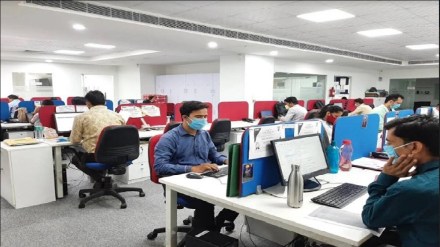Freshers have practically no takers in India—58% of our graduates are underemployed, earning less than Rs 6,000 per month. Our gross enrolment ratio is abysmally low, at 27%. Heartbreakingly, there is no correlation in India between the grandeur and size of the buildings of our education institutions and the return on investment for students by way of a decent livelihood. The missing link between these seemingly disjointed facts is a segway towards converging education towards livelihood of dignity. The solution is obvious—massification and innovation around an industry-led apprenticeship regime.
Before we jump to ‘how’, we must remind ourselves that India is one of the youngest nations, with over 52% of the population below the age of 25 and over 65% below 35. Soon, India will become the most populous country, overtaking China. With a rising population, India needs to utilise the potential of its human resources by empowering it with the right skills. For the context of the case I make today, especially in MSMEs, which are manufacturing powerhouses, and start-ups.
India is home to 7.9 million MSMEs (7.5 million micro, 0.3 million small and 35,000 medium enterprises), who foster entrepreneurship and generate employment at a comparatively lower capital cost. In terms of share, 31% MSMEs are in the manufacturing category, 36% in trade and 33% in other services. They have created 111 million jobs (trade contributing 35% and manufacturing 32%). Alongside, our 75,000 start-ups make India the third-largest start-up ecosystem, after the US and China, and they have created 0.7 million jobs. Also, 49% start-ups are from tier 2 and 3 towns, and this validates the tremendous potential of our youth.
But India has only 0.5 million apprentices, comprising 0.11% of the workforce (China has 20 million, Japan 10 million and the UK 0.7 million).
Notwithstanding the reforms introduced by amendments in the Apprenticeship Act, 1961, challenges continue to deter MSMEs and new start-up employers from engaging apprentices. There is a deep aspirational bias towards academics over skill training, accompanied by the pervasive view that students should finish their academic pursuits and then enter the labour market in white-collar jobs. Additionally, in the structure for rolling out education, especially higher education, on-the-job training through degree-linked apprenticeships is missing dispute the importance highlighted in the NEP. There is also a great deal of confusion about apprenticeship schemes as many of these are offered by multiple departments and states. To successfully impart training in addition to work, employers have to have an appropriate infrastructure in place.
A growing employment crisis has refocused attention on the importance of cultivating employability by bringing on-the-job training and learning. At the same time, the employability of India’s youth is 45%, primarily due to the shortage of relevant skills. This scenario clearly depicts that India doesn’t have a jobs problem, but a relevant skills problem. The classic remedy for addressing the issues of talent shortage and skills gap is apprentices. If MSMEs and start-ups engage a small portion of apprentices, both sectors have the potential to generate a huge amount of apprentices. The MSME sector, especially establishments with more than 30 employees and engaging 2.5% of apprentices of their total manpower, alone has the potential to generate over 2.5 million apprentices. If MSMEs and start-ups have 10% of their workforce as apprentices, there would be a trained workforce of about 9 million youth and hiring 15% would generate a 13.5 million industry-ready workforce. Apprenticeships offer a way to connect education, skills and employment, enable employees and employees to find the best match and employability, signalling value for youth in the job market.
The author is co-founder, executive director, TeamLease Services Ltd.
Also Read: Globus Infocom aims to cloak net revenue of Rs 600 crore in FY 23, plans to expand to Maharashtra besides Southern India
